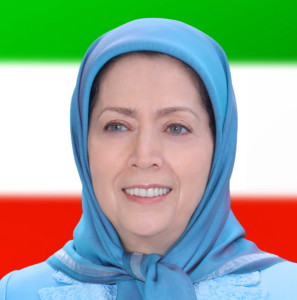June 20 marks the 40th anniversary of resistance against the Iranian regime- The historical red line separating freedom and religious tyranny
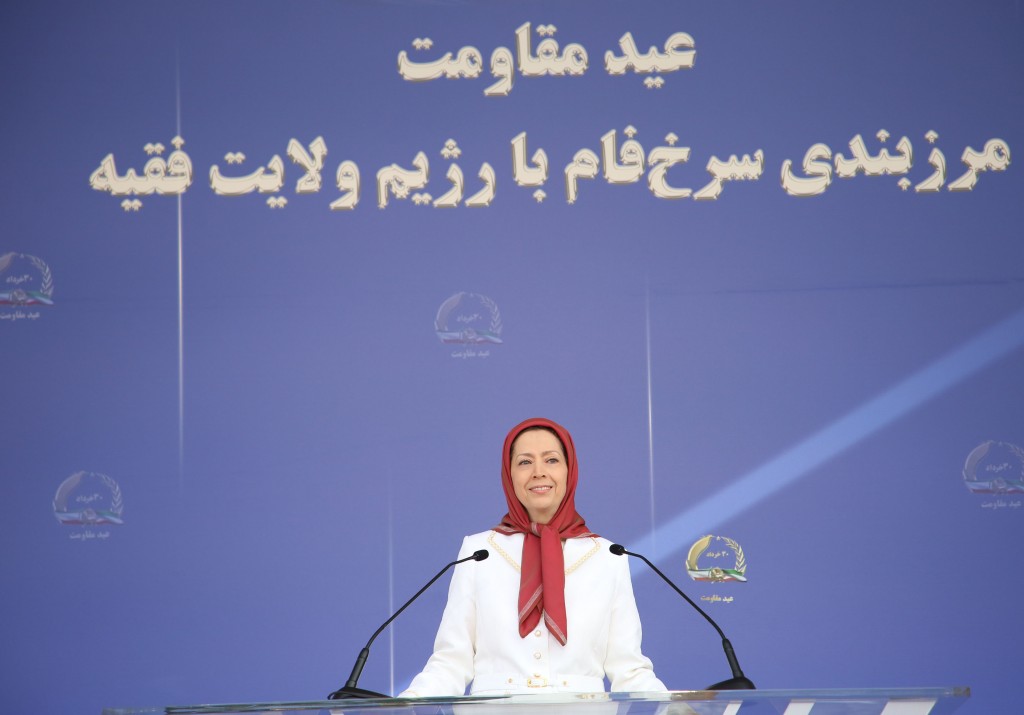
Maryam Rajavi: The Shah could not save his regime by promoting A’zhari, and Khamenei will similarly fail to do so after promoting Raisi
My fellow compatriots,
A historic congratulation to you, the people of Iran, for the nationwide boycott of the clerical regime’s sham elections.
The boycott was the most significant political and social blow to the mullahs’ supreme leader Ali Khamenei and the religious fascism. It proved and showed to the world that the Iranian people’s only vote is to overthrow the mullahs’ regime. The nationwide boycott is a groundswell of the martyrs’ sacrifices and reflects the Iranian people’s great campaign for justice.
Installing a mass murderer and a criminal against humanity as the regime’s president, is a sign of desperation that the regime has reached the end of the line and faces overthrow. Ebrahim Raisi must be brought to justice in an international tribunal. This is the Iranian people’s demand.
Emerging out of this disgraceful election will be a more vulnerable and fragile religious dictatorship. It is bound to perpetrate worse crimes with the henchman of the 1988 massacre at its helm. But it inevitably will be overthrown by the Iranian people’s uprising and the Army of Freedom. Freedom and a democratically-elected republic are the Iranian people’s inalienable rights.
Dear compatriots,
Courageous members of resistance units, People’s Mojahedin of Iran,
It is with utmost pride and honor that the Iranian people’s democratic and patriotic Resistance against this theocratic monster celebrates its 40th anniversary.
Today marks the anniversary of the beginning of the nationwide Resistance on June 20, 1981. It is also called the day of martyrs and political prisoners and the founding day of the National Liberation Army of Iran.
June 20 is the momentous day of holding fast to the historical red lines that set apart freedom from despotism and dictatorship, brightening and illuminating our 40-year history. Forty years of steadfast perseverance despite repression, massacre, and demonization; Forty years of Resistance to establish and advance the democratic alternative; Forty years of relentless struggle while constantly keeping aloft the flag of regime change and overthrow of religious fascism.
Yes, this is the iron will of our magnificent resistance for freedom and the splendor and grandeur of our quest for freedom.
Compatriots,
The declaration of the fifth round of the Liberation Army’s founding attests to our Resistance’s rise and advancement in the course of the struggle to overthrow the clerical regime. This is in stark contrast to the mullahs who have unmasked their regime’s demise by putting in place the despised henchman of the 1988 massacre [Ebrahim Raisi]. The announcement marks a watershed moment and a significant turning point in developments towards the overthrow of the clerical regime.
June 20 was indispensable
We celebrate June 20 as the beginning of the Iranian people’s blood-drenched Resistance and the anniversary of the day when 500,000 people in Tehran took to the streets to protest Khomeini and the ruling reactionary clerics.
June 20 was the extension of the popular and freedom-loving ideals of the 1979 Revolution, which Khomeini diverted toward the altar of his dark tyranny.
Before that, during the 2.5 years when political activities were still possible to raise public awareness about the regime, the Mojahedin (PMOI/MEK) locked hands in unity, tried their utmost and did everything they possibly could, exercising unprecedented discipline and extraordinary tolerance – tolerance truly beyond anyone’s limits – while enduring the onslaught of club-wielding gangs, floggings, suppression, and executions by the regime, to preserve peace and to prolong the period of peaceful political co-existence.
That is why not a single day went by without Massoud (Rajavi, the Leader of the Iranian Resistance) meeting or holding talks with the clerical regime’s figureheads and leaders and members of Khomeini’s Revolutionary Council, who had just seized power.
Not a week went by without him meeting or speaking on the phone with Khomeini’s son, Ahmad, who was Khomeini’s de facto chief of staff.
Yet Khomeini responded with clubs, daggers, and bullets.
During this time and even before June 20, 1981, fifty-four supporters of the PMOI/MEK were killed in Tehran and other cities. In addition, thousands of others were incarcerated because the PMOI/MEK did not retreat from its red lines against the reactionary rulers and did not back down from its quest to win freedom for the people.
The Mojahedin endeavored to preserve the minimum political freedoms remaining from the 1979 Revolution. Khomeini, however, rushed to monopolize power for his reactionary ideology and to wage repression.
On June 20, 1981, he turned the people’s peaceful demonstration in Tehran into a bloodbath. The next day, the regime sent dozens of teenage girls before firing squads without determining even their identities.
So, with his own hands, Khomeini put an end to his regime’s legitimacy.
June 20, 1981, was thus the most seminal development and the most consequential event for Iran in the last century since the 1953 coup or the 1979 Revolution.
For this reason, June 20 is still vibrant and roaring, inspiring struggle and uprising against religious fascism.
June 20 has risen from an ideological and political viewpoint which has always been a guideline for the Mojahedin’s conduct: religious dictatorship is the principal contradiction within Iranian society, and freedom is its saving grace.
We do not forget that in the early years of Khomeini’s rule, the coalition of reactionary allies of Khomeini, including the reactionary leftists, admonished and castigated the PMOI/MEK for its unyielding insistence on freedom. The communist Tudeh Party taunted Massoud Rajavi for “worshiping and loving freedom so much.”
Yes, our Resistance is a disciple of the angel of freedom and sacrifices its whole existence so that Iran and Iranians will be free.
Mullahs’ regime will not accept free elections
June 20 is a reminder of a theoretical and political truth that today is evident to all. A viper never gives birth to a dove. The absolute rule of a jurisprudent, i.e., the Velayat-e Faqih regime, is inherently incapable of reform. It does not have the capacity for moderation, and it will never accept free elections.
The PMOI/MEK paid a heavy price in the past 40 years to prove these truths and to draw the boundaries that are clear to everyone today. During these four decades, the Mojahedin have sacrificed an ocean of blood to debunk the outdated, reactionary and opportunistic theories which blamed the Mojahedin for resorting to arms and resistance at the wrong moment. Otherwise, those theories would still have been prevalent today.
These theories implied that the PMOI should have followed in the footsteps of the Tudeh Party after the 1953 coup, remorsefully surrendering to the prevailing circumstances.
In diametric opposition to these backward and opportunistic viewpoints, Massoud Rajavi was the flag bearer of maximum resistance, advocating a resistance against tyranny that would be hundreds of times more ferocious. He believed anything less would be self-delusion and would deceive the masses already trapped in the clutches of the religious fascist regime.
Indeed, what was the fate of “the reform game” under religious fascism?
What were the results of the deceptions of Khatami and Rouhani?
And today, on whose shoulders has the mass murderer of 1988 reached the presidency?
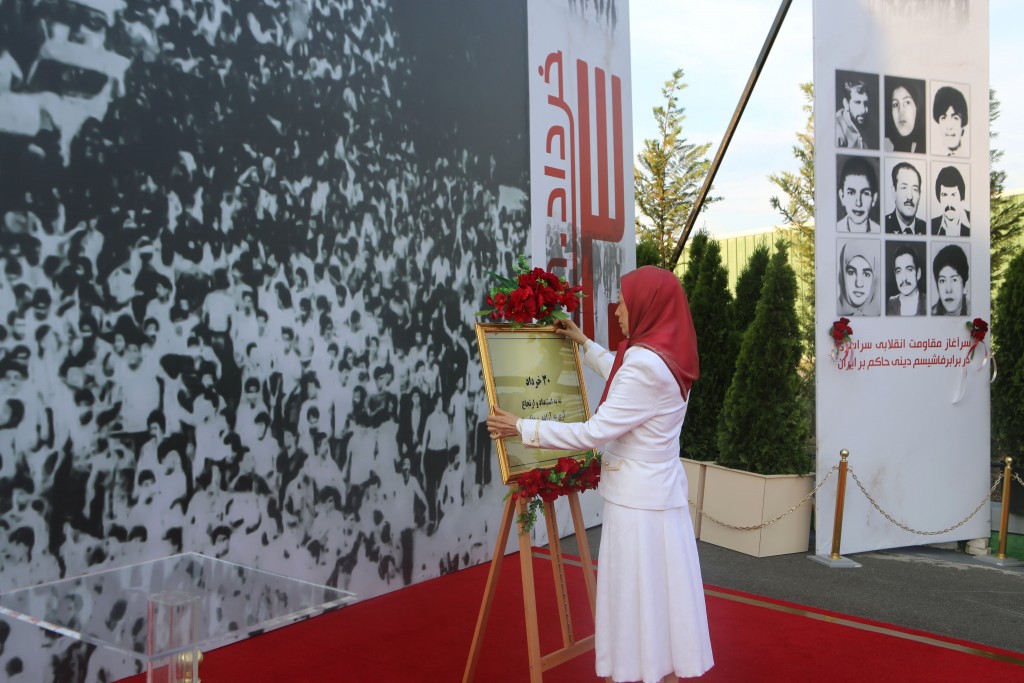
Four decades of struggle against religious fascism
Fellow compatriots,
Resistance units, and supporters of the Iranian Resistance,
Between June 20, 1981, and June 20, 2021, is the story of four decades of struggle waged by Iran’s most courageous children against the most evil dictatorship in Iranian history.
On that fateful day, too, there was only one question when confronting the mullahs’ religious fascism: To resist or to surrender? To struggle or not to struggle?
And indeed, without resistance and struggle against religious fascism, Iran’s history would have nothing to be proud of in the face of the Velayat-e Faqih, Khomeini, and Khamenei.
Four decades of struggle with plenty of ups and downs, with numerous crossroads to choose between paying the price or avoiding it, between risk-taking or being conservative, between adherence to principles of struggle or opportunism.
And, of course, this generation made the beautiful choice of stepping into the flames despite all the perils. It did not fear the torture chambers, slanders, or the gallows. On the contrary, and amazingly, in the face of all the attacks, lies, and evil conspiracies, this generation continued on its way more faithfully and with greater conviction.
Indeed, is it possible to compare these four decades to any of the fiercest battles in Iran’s history?
It seems that these four decades shine at the summit of Iran’s history because of endless sacrifice, the length of time, complex circumstances, and confrontation with religious deception under the banner of Islam. The struggle against religious fascism involved fighting against its allies who sharpened its daggers, those who succumbed, and those who appeased it.
This Resistance is a new historical model whose price, of course, has been and will remain to be very high. An incredible and massive front that has been fighting on for four decades under Massoud Rajavi’s leadership. With a galaxy of martyrs and massacred victims, and political prisoners. And with combatants who loudly express their readiness and march ahead a thousand times more determined than ever.
Compatriots,
June 20 represents a powerful movement that has established the most important institutions of the Iranian struggle in the past four decades:
The National Council of Resistance of Iran, the democratic alternative to the clerical regime, whose proud existence cements the Iranian people’s historical NO to the Shah and the Sheikh;
The National Liberation Army of Iran has inspired successive generations of the anti-regime fighting force to rise up and resist;
The perseverance in Ashraf and Liberty;
The establishment of 1,000 bastions of steadfastness and resistance units in Iran under repressive rule;
And the formation of the Central Council of the PMOI/MEK with 1,000 women. They represent the Iranian women at the forefront of the struggle to overthrow the most misogynistic regime in the history of Iran and the world.
Yes, on the basis of such creations and trailblazing, the structure and framework of the Resistance has been solidified and prolonged over these forty years.
The 1988 massacre of the PMOI/MEK
On the eve of June 20, 1981, Khomeini told the Mojahedin: “If I believed that among a thousand probabilities, there was even a miniscule probability that you would give up what you want to do, I would be willing to agree with you.”
In the summer of 1988, Khomeini issued a fatwa for the massacre of PMOI and combatant political prisoners. The decree, which is essentially his original will, contains a key sentence where he expresses his last wishes to the regime in its entirety that “anyone who insists on their support for the PMOI/MEK is a Mohareb (or enemy of God) and deserves to be sentenced to death.”
Throughout these four decades, the regime’s central motto has been “death to the MEK” or, as they put it, “the hypocrites.”
Over the past forty years, the clerical regime obliterated all its enemies through suppression, enticement, and intimidation.
However, it failed in its goal of destroying the progressive and popular opposition or to remove the deep-seated and widespread roots of the Mojahedin and the Iranian Resistance in society. Moreover, it was defeated when confronting the Iranian Resistance’s policies and strategy, as well as the PMOI/MEK’s emancipating, anti-reactionary, and anti-exploitive interpretation of Islam.
Yes, the mullahs suffered utter defeat in the face of the righteousness and legitimacy of the Mojahedin and their leader, who taught many lessons over the past 40 years about pursuing politics based on human dignity. Massoud’s name consistently symbolizes struggle, resistance, and uprising for freedom. In this way, June 20 was the secret to breaking through the deadlocks.
He manifests an emancipating theory that believes resistance at any cost is a source of sustainability and progress.
He is the symbol of a generation that is willing to pay the price, no matter how high, wanting nothing in return and while rejecting opportunism. He has consistently called for a democratic revolution and a democratically-elected republic. As Massoud said: June 20, brilliant and blood-drenched, turned into a red line and a marker between democracy and dictatorship and presents a guideline for what must be done.
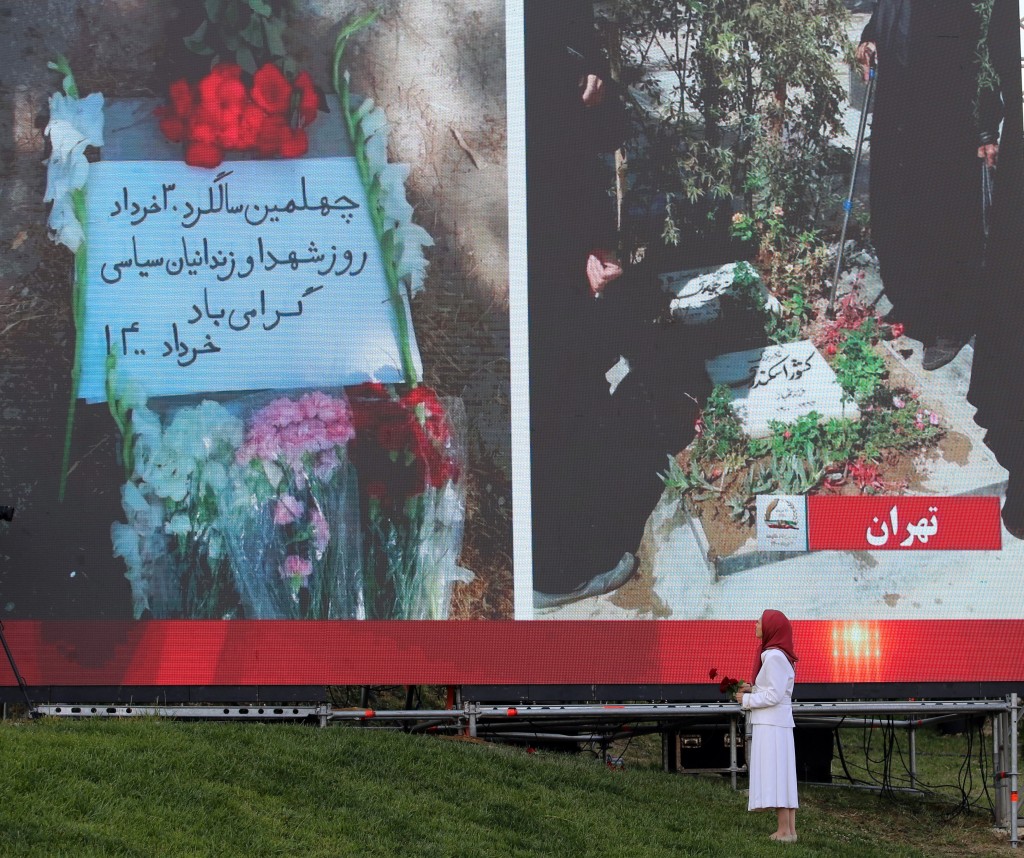
The henchman of the 1988 massacre becomes regime president
Fellow compatriots,
The clerical regime’s sham election and installing the henchman of the 1988 massacre and the mass murderer of the PMOI/MEK as its president is an attempt doomed to failure and will not save the regime.
Just as the appointment of General Az’hari [in the final months of the Shah’s rule] did not save the Shah’s dictatorship, the appointment of the henchman of the 1988 massacre will not save Khamenei’s dictatorship.
No other internal regime development could have shed more light on its political demise and looming overthrow.
So, he is not a solution for the regime but a symbol of the regime’s impasse, and the fact that it has ran out of options.
Moreover, his appointment indicates that Khamenei does not trust even the loyal members of his inner circle. Only someone can become the regime president who is immersed in the blood of the massacred Mojahedin. Therefore, Khamenei accepted both the scandal of appointing this person and the disgrace of a boycotted election.
By their nationwide boycott of the sham election, the people of Iran demonstrated their united will to overthrow the regime. The boycott is another representation of the glorious November 2019 uprising. In this boycott, one can hear the footsteps of the looming uprisings.
The Iranian society’s conscience was severely scarred by the vicious slaughter of protesters in November 2019, on Khamenei’s orders. At the time, the Iranian Resistance declared the number of martyrs to be at least 1,500. But recent investigations by Iranian academics in the U.S. and the U.K. universities show that the number of those killed during the November 2019 uprising is more than three times this figure.
The research done with considerable accuracy indicates that the number of those who passed away in November 2019 was 4,200 more than the previous month in October and 4,900 more than the following month in December. Therefore, the actual number of martyrs is approximately three times more than the 1,500 declared by the PMOI at the time. We have repeatedly called for a formal international investigation into the November 2019 massacre. The new light on the number of martyrs makes such an investigation more imperative.
Despite such an extensive killing spree, Khamenei continues to tremble day and night, fearing the eruption of more uprisings.
The new Iranian century with freedom and democracy
To close his regime’s ranks and confront popular uprisings, Khamenei, on the one hand, opened the path for the spread of the coronavirus in Iran, causing the deaths of more than 300,000 of our compatriots to date. On the other hand, he installed Ebrahim Raisi, the henchman of the 1988 massacre as president.
More than anyone else, Khamenei is aware of the decaying state and deficiencies of his regime as well as the society’s readiness to overthrow it. Therefore, he has adopted a defensive posture, closing ranks at the top of the regime and resorting to war with the Iranian society and the international community.
In the wake of the uprisings in 2017 and 2018, Khamenei announced “the second step declaration,” outlining the regime’s lines of defense. These included the removal of his rival faction from the mullahs’ parliament, the slaughter of the November 2019 protesters, the strategy of causing mass Coronavirus casualties, picking the people’s pockets and plundering their wealth, missile attacks on ships, oil tankers, or centers belonging to neighboring countries and the U.S., as well as unleashing its nuclear program. All these are parts of a strategy whose political expression is the presidency of the henchman of the 1988 massacre.
This strategy, however, does not have any socio-economic or international support.
Instead, it is a strategy that will make the regime more fragile and will aggravate its conflict with the Iranian society many times more.
Raisi’s appointment, as Massoud Rajavi said, “is an open and more forceful declaration of war against the people of Iran by the great thief of their sovereignty.” Since June 20, 1981, there have only been two main opposing camps in Iran: The camp of people’s resistance for freedom on the one hand, and the camp of religious fascism, reaction, and dictatorship seeking to preserve a murderous regime on the other.
Now, on the 40th anniversary of Resistance, the regime is struggling in a vortex of overthrow, so much so that it has decided to tie its fate to an evil mass murderer whose name and identity symbolizes the end for the regime.
Fortunately, today some of the most prominent non-governmental institutions which defend human rights have joined with the people of Iran to call for the prosecution of Ebrahim Raisi. Amnesty International’s Secretary General Agnès Callamard said: “That Ebrahim Raisi has risen to the presidency instead of being investigated for the crimes against humanity of murder, enforced disappearance and torture, is a grim reminder that impunity reigns supreme in Iran.
After a century stained by disgraceful names such as Mokhtari, Sabeti, Lajevardi, Raisi, Reza Khan, Shah, Khomeini, and Khamenei, today in the Persian year 1400, the page of Iran’s history is turning. A proud history symbolized by June 20, 1981, filled with brilliant epics such as the martyrdoms of Ashraf Rajavi and Moussa Khiabani, the Eternal Light Operation, the perseverance of Ashraf, and thousands of blood-drenched uprisings from June 20, 1981, to the uprisings in Mashhad and Qazvin, to the December 27, 2009 uprising, to the uprisings in December 2017-January 2018, and November 2019; Yes, a galaxy of uprisings will continue until the arrival of the day of overthrow and the day of justice for massacred victims.
Martyred on June 20 and 21, 1981
The seeds of sacrifice planted by those innocent teenage boys and girls who did not even reveal their names before being executed on Khomeini’s orders the day after the June 20, 1981, uprising have now sprouted everywhere. They have risen up again in Resistance Units in most cities across Iran. Their eternal names are ornaments of the 40th anniversary of June 20. Those martyred on June 20 and 21, 1981, included:
Maghsoud Akherian, Ebrahim Ebrahimi, Zahra Ebrahimian, Kobra Ebrahimian, Ramin Arastafar, Aref Eqbal, Manouchehr Ovaisi, Davoud Pour-Nassiri, Gholam-Ali Jaafari, Seyed Reza Jamshidi, Arya Hadidi, Mohammad Esmail Hosseinzadeh, Houri Daroudi, Ramin Dashti, Tahereh Deh-Haghi, Ali Dehghani-Nejad, Habibeh Zolfaghari, Mohammad Reza Ramzi Sohrabi, Nadim ol-Karim Rouhi Tayyebabadi, Ali Asghar Zehtabchi, Rasoul Zeinalzadeh, Saeed Seraydar, Kourosh Saifi, Maryam Shakeri, Gholam Sedaghat, Manouchehr Talaii, Parvaneh Zahiri, Ali Ghafouri, Fatemeh Fazelzadeh, Mohammad Jafar Fakouri, Razieh Ghobadpour, Jaafar Ghanbarnejad, Hamid Reza Karimi Gorgani, Zeinab Mahmoudi, Saeed Modgham, Seyyed Hossein Mortazavi, Seyyed Hossein Massoumi, Mehdi Mofarrah, Manouchehr Mokallabi, Mahmoud Makvandi, Mohammad Malek, Reza Nessari, Zahra Nejad Imani, Mohammad Nematpour, Mohammad Nematzadeh, and Ramin Naghashzadeh.
These martyrs are brilliant stars shining among a generation that has not put down the flag of overthrowing this regime even for a day or for an hour. This flag will indeed be hoisted on the ruins of Khamenei’s palace.
We hear the cries of 120,000 martyrs fallen for freedom in the voice of the Resistance Units, the Army of Freedom, and its fifth round of founding.
We hear them in the sound of volcanic uprisings echoing throughout the society and terrifying the regime.
They will indeed come to mark the triumph of June 20 and all the resistances and uprisings of the past 40 years.
Yes, the people of Iran will overthrow a regime that is based on executions and massacres.
The Iranian people will triumph. They will be free!
Long live freedom!
Hail to the martyrs!
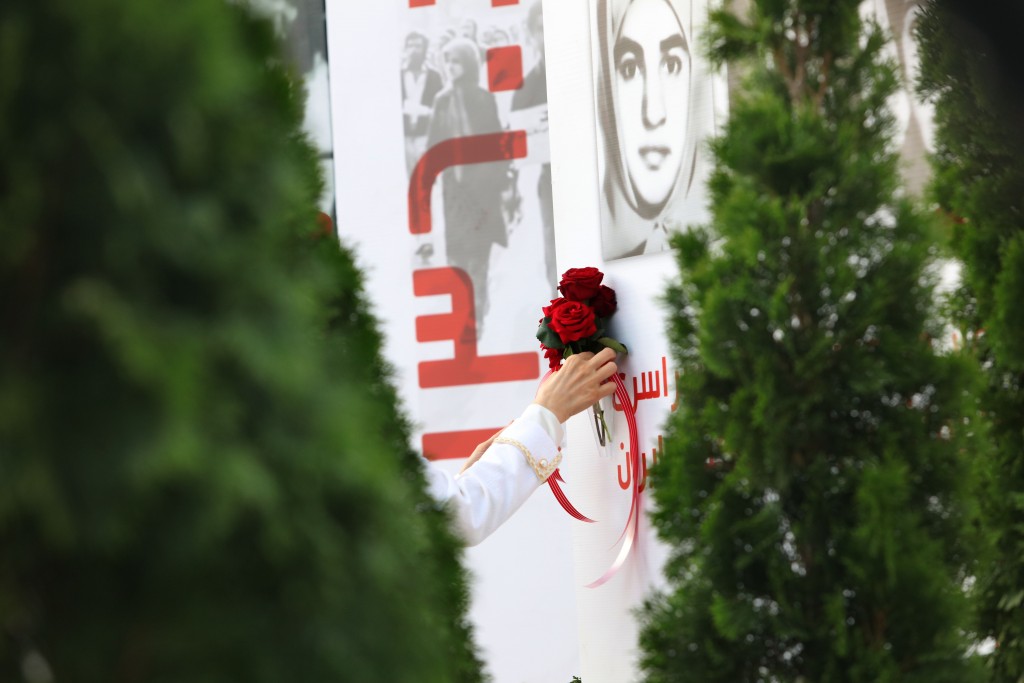
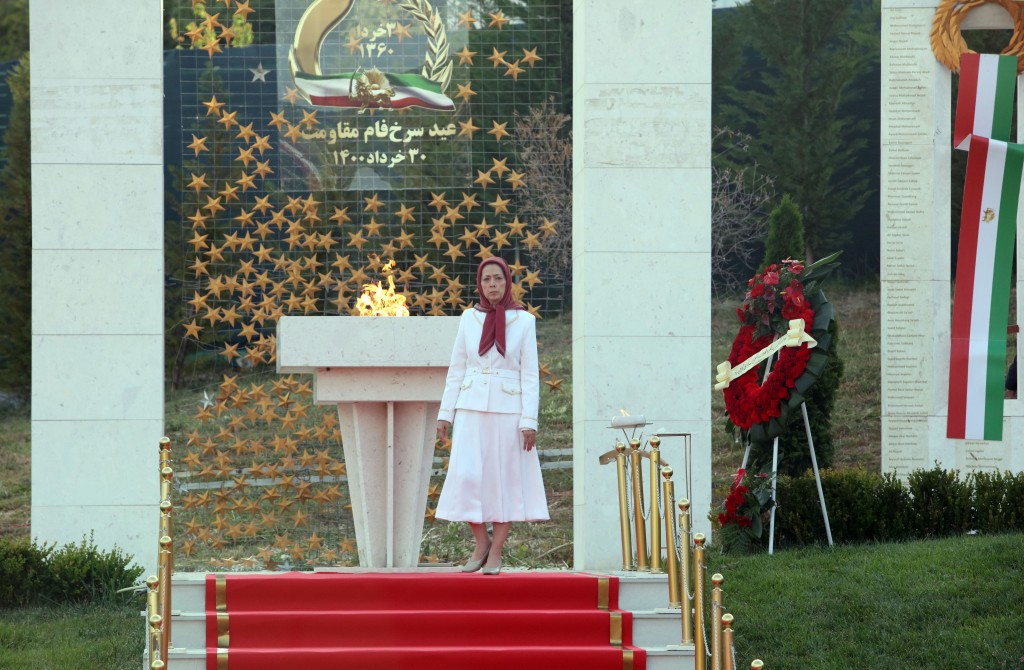
- Tags: Free Iran, Human Rights, Maryam Rajavi, MEK, Mojahedin, mullahs' regime, victim

